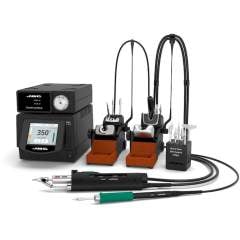JBC's Contribution to Advanced Soldering Applications
JBC's Contribution to Advanced Soldering Applications
Blog Article
Unmatched Precision with JBC Soldering Tools
Automation and activity control methods are spinning the rules of manufacturing, logistics, and also power management. Behind the layer, innovative products and powerful improvements are driving efficiency, sustainability, and output to exceptional new heights. What makes these answers such a warm jbc topic, and why are they sugar tendency lists in commercial circles?

Shaping the Potential with Figures and Styles
Today, around 60 per cent of factories in advanced economies have applied some amount of automated motion control. Modern receptors, electrical pushes, and digital controllers today underpin sets from robotics to conveyor belts. According to a 2023 report, the world wide movement get a handle on market alone is predicted to achieve $21 thousand by 2027. That quantity shows a compounded annual development charge (CAGR) of 6.5 percent, featuring so just how eager industries are to adopt high-precision automation.
But it's not just conventional factories which can be benefitting. Circulation stores across North America and Europe are reimagining workflows through sensible conveyor techniques and autonomous vehicles. These updates improve throughput by as much as 30 %, cut job charges, and reduce error prices across fast-paced present chains.
Accuracy Meets Production
High-precision motion engineering has turned into a must-have in sectors demanding reliability and reliability. Semiconductor manufacturing is an example, where linear motion books and multi-axis controllers produce precision assessed in microns. New surveys reveal that companies leveraging these answers see problem charges reduce by around 40 per cent, providing them with a substantial edge in a fiercely aggressive field.
Renewable energy and e-mobility are seeing related revolutions. Wind and solar installations significantly count on real-time automation to boost power capture and streamline maintenance. That wise approach helps reduce downtime, with one study noting a 20 percent decrease in preservation costs at facilities which have adopted automated get a grip on systems.
The Intelligent Factory Revolution
Automation is no more almost lowering human error. It's about making smart factories, wherever every part communicates seamlessly. Technologies presenting predictive analytics and IoT connection monitor equipment health and anticipate maintenance wants before breakdowns occur. Research shows that predictive maintenance can reduce unplanned downtime by up to 50 per cent, translating into substantial savings for seed operators.
From automotive suppliers ramping up production speed to logistics firms seeking specific managing and energy savings, the numbers inform a powerful history about that accelerating sector. If you monitor current styles or shape purchasing choices, understanding where the industry is headed is crucial.
What's Next for Automation and Motion Control?

The focus on sustainability, data-driven manufacturing, and better supply organizations will only grow. Global demand for robotics and wise controllers continues to increase, particularly in areas wherever effectiveness and versatility suggest survival. Industries buying next-generation automation are setting themselves apart—with the figures to demonstrate it.
For companies mapping out their next transfer, automation and motion get a grip on are getting less of a choice and more of a necessity. With returns assessed in larger productivity, lower charges, and new capabilities, the situation for use never been clearer.
Report this page